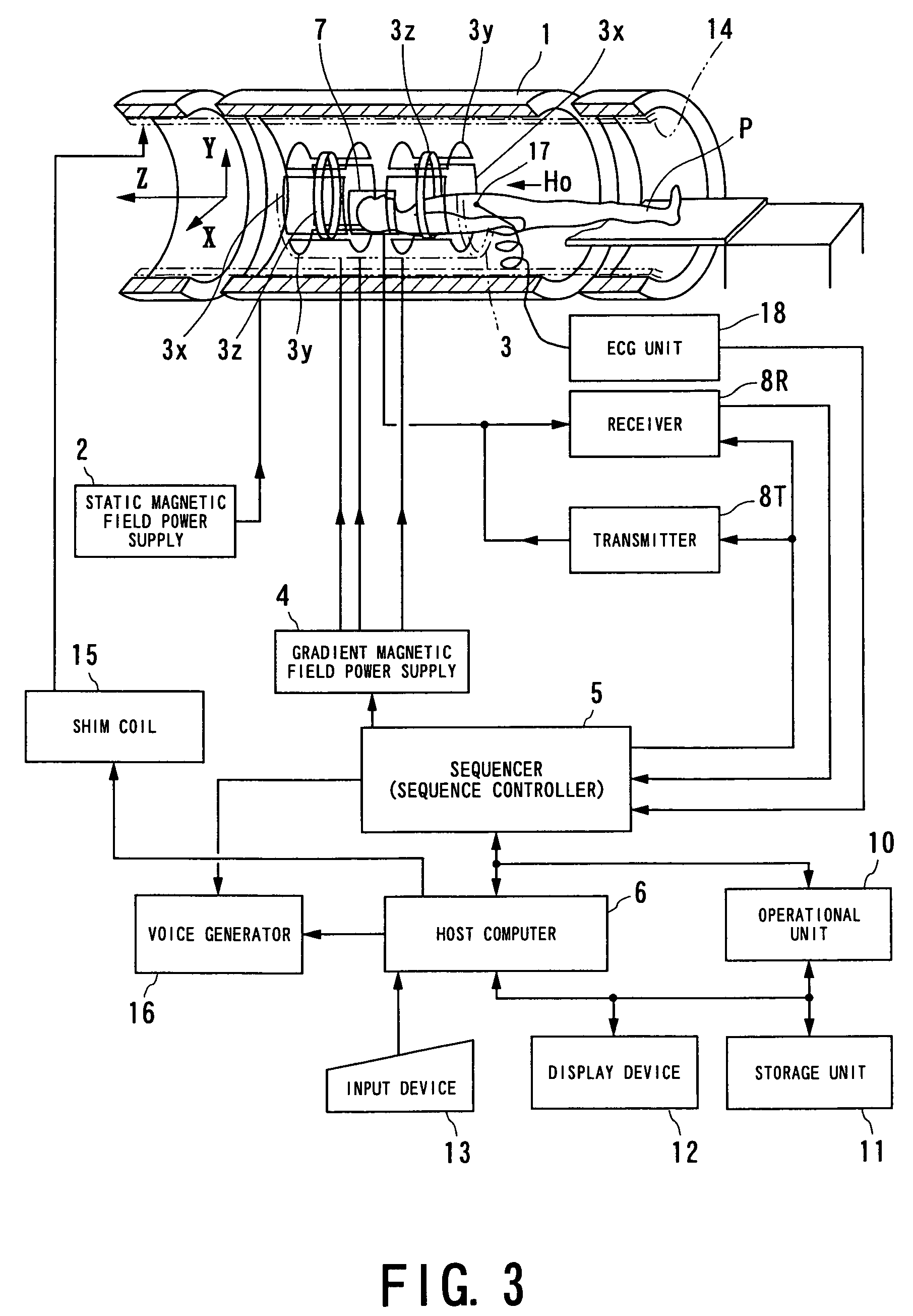MRI apparatus and ASL imaging technique
a magnetic resonance imaging and asl imaging technology, applied in the field of magnetic resonance imaging apparatus and asl imaging technique, can solve the problems of unsolved problems, blood flow cannot reach the imaging region of interest within the ti time, under evaluation, etc., and achieve the effect of reducing td time-induced errors and increasing sensitivity
- Summary
- Abstract
- Description
- Claims
- Application Information
AI Technical Summary
Benefits of technology
Problems solved by technology
Method used
Image
Examples
first embodiment
[0057]A first embodiment of the invention will be described with reference to FIG. 3 through FIG. 12.
[0058]FIG. 3 shows an MRI apparatus according to the first embodiment. The MRI apparatus is furnished with a function of performing ASL imaging of various types of the invention.
[0059]Initially, the schematic configuration of the MRI apparatus will be described.
[0060]The MRI apparatus includes a patient couch portion on which the subject P is laid down, a static magnetic field generating portion generating a static magnetic field, a gradient magnetic field generating portion appending position information to a static magnetic field, a transmission and reception portion transmitting and receiving a high frequency signal, and a control and operation portion responsible for the control of the overall system and image reconstruction.
[0061]The static magnetic field generating portion includes a magnet 1, for example, of a super-conducting type, and a static magnetic field power supply 2 s...
second embodiment
[0106]An MRI apparatus according to a second embodiment of the invention will now be described with reference to FIG. 13. For the MRI apparatus of this embodiment, the same or equivalent components as those of the MRI apparatus according to the first embodiment above are labeled with the same reference numerals, and the description of these components is omitted or simplified (the same can be said in third and following embodiments described below).
[0107]The MRI apparatus according to the second embodiment is characterized in that it is furnished with a function of performing the ASL imaging of the invention, and in particular, it is able to address a blood flow velocity in a wider range.
[0108]The ASL imaging performed in the second embodiment is a technique of reinforcing the BVS-ASL technique described above. When the BVS-ASL technique described above is performed solely, an artery having a high flow velocity outside the slab tagged by the velocity-selective pulse: BVS-pulse, BVS-...
third embodiment
[0118]An MRI apparatus according to a third embodiment of the invention will now be described with reference to FIG. 15.
[0119]The ASL imaging performed by the MRI apparatus of this embodiment is characterized in that it performs slab selection although it is the non-slice-selective ASL imaging technique of the unipolar-VENC type.
[0120]In order to realize such a characteristic, as is shown in FIG. 15, a pulse sequence is formed so that slab selection is performed with the use of a GMN (gradient moment nulling) pulse as the velocity-selective pulse: BVS-pulse.
[0121]When the slab selection is performed, the effect of the velocity encode (causing a phase to shift at a given velocity or higher) takes place in the control mode, and for this reason, the gradient magnetic field pulse for the slab selection is set to the GMN pattern. On the tag mode side, it is formed to give the velocity encode by the MPG pulse as with the embodiments above. This makes it possible to save the magnetization ...
PUM
 Login to View More
Login to View More Abstract
Description
Claims
Application Information
 Login to View More
Login to View More - R&D
- Intellectual Property
- Life Sciences
- Materials
- Tech Scout
- Unparalleled Data Quality
- Higher Quality Content
- 60% Fewer Hallucinations
Browse by: Latest US Patents, China's latest patents, Technical Efficacy Thesaurus, Application Domain, Technology Topic, Popular Technical Reports.
© 2025 PatSnap. All rights reserved.Legal|Privacy policy|Modern Slavery Act Transparency Statement|Sitemap|About US| Contact US: help@patsnap.com



